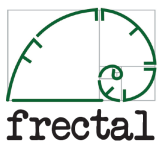Uniting Process Improvement and IT- a move towards smart economies?
Having looked at the complexity of change across the domains of healthcare, management and information technology, we have concluded that the key patterns seen involve people, process, information, technology, standards and the pursuit of value.
We have looked at the link between process improvement and information technology from both angles and noted that the join between these disciplines is suboptimal at present, with significant room for a better join.
To reinforce and conclude this key point one more time, I would like to highlight the theoretical potential value of generic business process oriented – service oriented architectures. We need to go back to the Cynefin framework to put this abstract recommendation into context.
If we begin with the knowledge that chaos can be the starting conditions for change within an organisation. Chaotic organisations might demonstrate a very poor fit between their processes and related technologies. While not unheard of such organisations needs change and leadership to begin that change
As the change challenge is usually a complex one, so it needs a small number of people to look for common patterns amidst the chaos or complexity of an organisation to suggest ways to change.
(Note this exploration must be done at a “logical” aka “generic” level. Too often this is done at a physical level which is not enough to abstract out the common patterns )
While an uncommon view, it is my experience (in healthcare at least, though I strongly sense it is a more generic finding) that if one looks deeply into any organisational complexity one quickly finds common patterns;
One such pattern is the layering of processes within organisations at the operational, tactical and strategic levels.
Another pattern relates to the generic cycle of process, such as the common problem solving process, which certainly lies at the heart of healthcare.
Furthermore these process patterns also exhibit both fractal and recursive properties at all levels.
These process patterns should help inform process improvement methods as well as related service oriented architecture design.
The splitting of physical and logical/generic layers is critical to pursue moves between;
Physical As Is
Logical As Is
Logical To Be
Physical to Be..
process improvements.
Beyond this complex systems oriented approach to analysis, there is a related need to avoid the traditional waterfall approach using an army to building enterprise information systems, rather to foster smaller teams using more spiral, agile development cycles.
Of course the more traditional approach to software engineering has taken a more “complicated” (see Cynefin) view of systems.. with resulting efforts ranging from the use of BPMN to model physical processes at a software project level to the wider development of information systems architectures such as the Zachman framework at an enterprise level.
While these traditional/complicated approaches have their successes they appear to struggle to fit with the spiral, agile methods of software development best suited to complex systems.
As the promise and expectations of Service Oriented Architectures has grown in recent time, my sense is that this technology advancement is probably being held back within the aforementioned constraints around software engineering for complex system.
However given the right complex system ready foundation then services provided on a service oriented architecture should be welcomed, as they will move the industry to better supporting process improvement with scalable, maintainable and interoperable information systems..
While there are, as yet, few if any, concrete examples of this theory in action, this appears as a potentially fruitful area for those considering the development of their smart economies. Meanwhile, developments in healthcare may be leading the way.
We will now look briefly at the challenge that related standards face to deliver value and the particular challenge of “the last mile”.
As I will be exploring in the next section, the openEHR specification has evolved as a generic business process oriented service oriented architecture for healthcare.
As we move on from this high level look at process improvement and information technology fields and delve into more detail within the context of healthcare, you may spot some familiar patterns..
References
http://en.wikipedia.org/wiki/Process_improvement
http://en.wikipedia.org/wiki/Service-oriented_architecture
http://en.wikipedia.org/wiki/Business_process_interoperability





Leave a comment